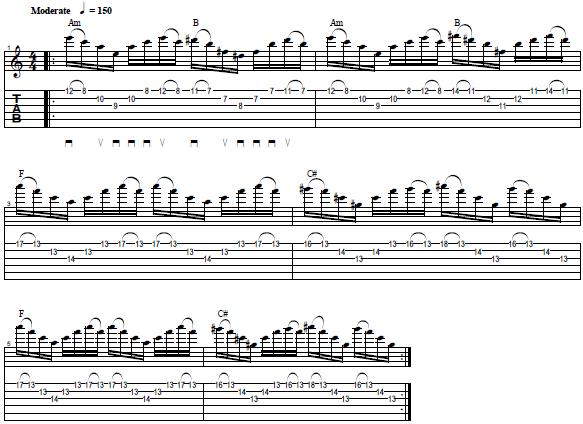

Whatever tempo you have your metronome set to will provide you with 4 clicks (assuming it is set to 4/4 timing).Įach of those clicks equates to a quarter note, which will have a count of:Įach of those clicks can then be subdivided into eighth notes, which will have a count of: Taking this concept and reducing it to just 3 notes is exactly what is happening here in this lesson. It is precisely that triplet feel that results in the Yngwie-esque sweeping sound that you are likely already familiar with. There is a significant difference between 16th-note-triplets and straight 16th notes. Hearing and feeling 16th-note-triplet subdivisions is absolutely critical for a clean sweeping technique. If you listen to a lot of metal, than most likely the sweeps that you hear are played via sixteenth-note triplets. Usually when you hear people playing sweep arpeggios, they are played using either: This is the important part, so pay attention!! The demo included 3 different arpeggio shapes for which the sweeping technique was applied. Rather, we are concerned with the actual chords for which we can apply these arpeggio shapes to.

However, we aren't too concerned with the scale in this lesson. In the demo video, the key of the rhythm section is in A minor, and the entire solo was played in pentatonic position #4 of this key. There are tons of basic major and minor arpeggio shapes that contain just 1 single note on each string, which is perfect to apply the sweep technique to. Sweep picking is usually applied to arpeggios (In-Depth Lesson Portal > Chord Tone Targeting). In this lesson, we will simply be sweeping across 3-note sequences. You can still apply the "sweep" technique to sequences of less notes, which is exactly what we are doing here in this lesson. Sweep picking does not need to be that complicated though. Guitarists such as Yngwie Malmsteen are well-known for using this type of technique. Usually when people think about sweep picking, they think about about it as pertaining to metal in which sequences of 12 or 24 notes are quickly and cleanly "swept" across. Sweep picking is when you play a sequence of notes across the strings, in either an upward or downward direction, and your picking direction remains constant.


 0 kommentar(er)
0 kommentar(er)
